#Lesson 1/Part 3: Nutrition and Food
We all have properly heard the simple equation of calories in and calories out. Eat more calories than you burn, and you will gain weight. Eat less calories than you burn, and you will lose weight. Right?
How I wish counting calorie will be that simple.
“Calories in”, you need to know and figure out how many calories are in the food that you want to eat. Either to use a notebook, fitness app, websites or database to create and record your meal plan. Often times, it is less accurate due to incorrect labelling, quality of food and measurement error.
“Calories out”, calculating your calories expenditure each day using different measuring tools or equipment can cause another error and inaccurate.
Welcome to Portion Size Control
All you need is to use your own hands and estimate your portion size and food intake. You don’t have to use weighing scale, measuring cups or calculator. Simply determine your macronutrients intake using your hands, let me show you how.
For men – 2 palm size of protein intake in each meal.
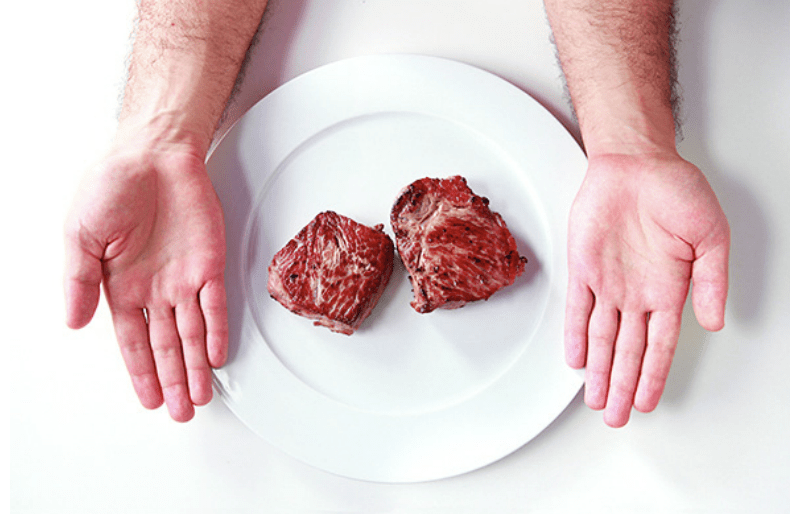
For men, 2 cup size of carbohydrates with most meals.

For men, 2 fist size of vegetables with most meals.
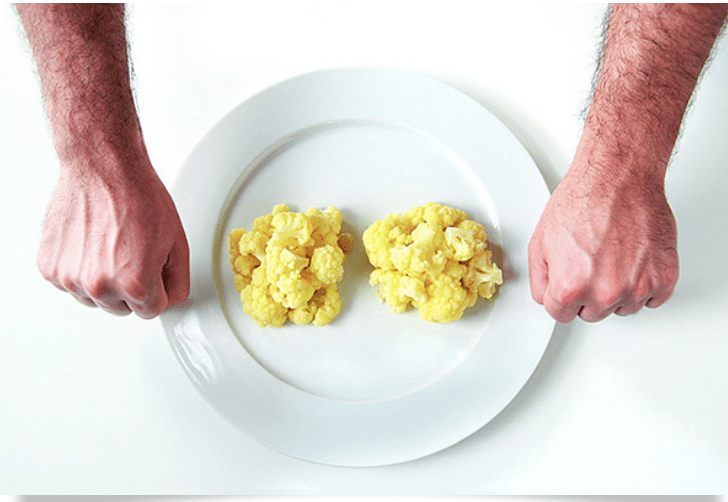
For men, 2 thumbs size of fats with most meals.
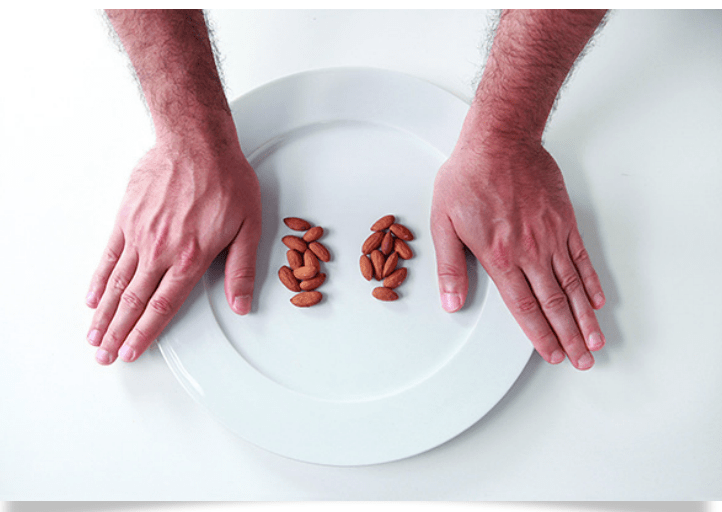
For women, one palm size of protein in each meal.

For women, one cup size carbohydrates with most meals.
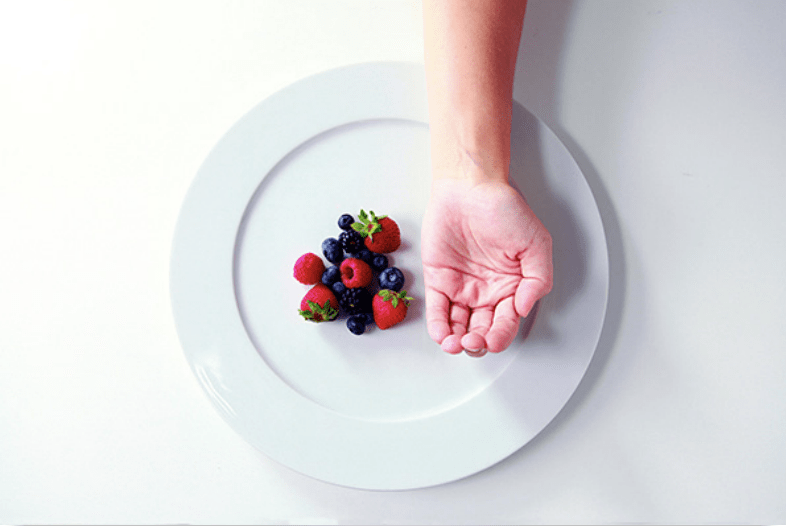
For women, one fist size of vegetable with most meals.
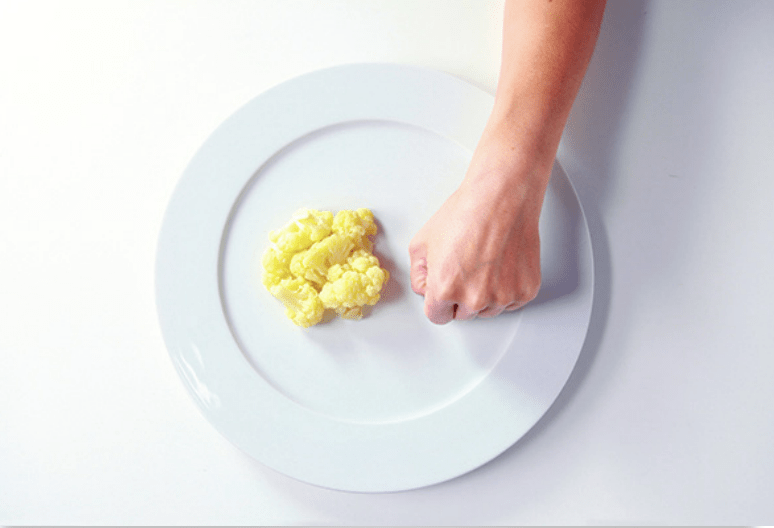
For women, 1 thumb size of fats with most meals.
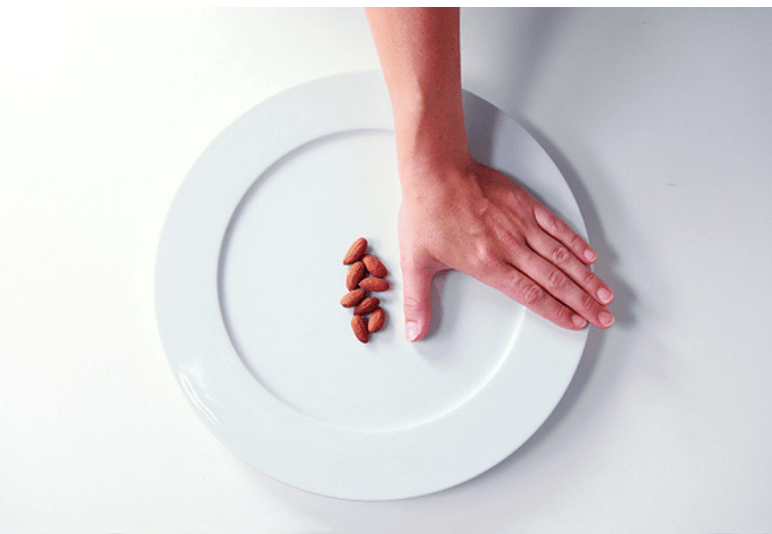
One thing to take note, palm size portion is the thickness and diameter of your palm. If you are a bigger size person, you will have a bigger palm and vice versa. The size of your hands correlates closely to your general body size. Using your palm size to determine your meal portion is a good starting point and you may add or reduce the portion size depend on your personal goal.
Here are the examples, of food groups that you may consider in your meal.
PROTEIN SOURCES | ||||
SOURCES | LEAN PROTEIN | FATTY PROTEIN | ||
MEAT | Lean Beef | Beef steak – sirloin, fillet, ribeye | ||
Lean minced meat ( turkey, chicken, beef | Duck | |||
Lean Pork | Fatty minced meat (beef, lamb, pork) | |||
Vension | Lamb | |||
Pork | ||||
FISH | Cod | Mackerel | ||
Haddock | Salmon | |||
King Prawns | Seabass | |||
Tuna (canned in brine or spring water) | Smoked Salmon | |||
Tuna Steak | Trout | |||
POULTRY | Chicken breast | Chicken leg/thigh | ||
Turkey breast | ||||
OTHER | Egg Whites | Whole eggs | ||
Greek Yoghurt | ||||
Protein Powders | ||||
Pork | ||||
FISH | Cod | Mackerel | ||
Haddock | Salmon | |||
King Prawns | Seabass | |||
Tuna (canned in brine or spring water) | Smoked Salmon | |||
Tuna Steak | Trout | |||
POULTRY | Chicken breast | Chicken leg/thigh | ||
Turkey breast | ||||
OTHER | Egg Whites | Whole eggs | ||
Greek Yoghurt | ||||
Protein Powders | ||||
LOW-CALORIE PLANT-ORIGIN PROTEIN SOURCES |
Vegan protein powder (generic) |
Tofu |
Soya beans (drained) |
Tempeh |
Pinto beans (drained) |
Edamame |
Black beans (drained) |
Kidney beans (drained) |
CARBOHYDRATES SOURCES | ||||
NON-STARCHY VEGETABLES | FRUIT | STARCHY VEGETABLES/GRAINS | ||
Asparagus | Apple | Beans (all types) | ||
Beetroot | Banana | Brown rice | ||
Broccoli | Blackberries | Couscous | ||
Brussels Sprouts | Blueberries | Parsnip | ||
Cabbage | Grapefruit | Quinoa | ||
Carrots | Kiwifruit | Sweet potatoes | ||
Cauliflower | Orange | Wild rice | ||
Celery | Pineapple | White potatoes | ||
Courgette | Raspberries | Whole grain products | ||
Green Beans | Strawberries | |||
Kale | Watermelon | |||
Lettuce | ||||
Mushrooms | ||||
Onions | ||||
Peppers | ||||
Rocket | ||||
Spinach | ||||
Tomatoes | ||||
Watercress | ||||
TYPE | FAT SOURCE |
NUTS | Almonds |
Brazil nuts | |
Cashews | |
Pecans | |
Walnuts | |
Nut Butter (all types) | |
SEEDS | Chia Seeds |
Flaxseeds | |
Sunflower seeds | |
Sesame seeds | |
Butter and Oils | Butter |
Coconut Oil | |
Olive Oil | |
DAIRY | Cheddar cheese |
Dark Chocolate (70%+) | |
Feta cheese | |
Goats cheese | |
Mozzarella cheese | |
Parmesan cheese | |
OTHER | Avocado |
Fatty protein sources | |
Whole eggs |
Now let’s practice and create a meal, choose your food from the food group given:
Step 1: choose your protein source (1 or 2 palm size)
Step 2: choose your carbohydrates source (1 or 2 cup size)
Step 3: choose your vegetables (1 or 2 fist size)
Step 4: choose your fat source (1 or 2 thumbs size)
And this is how it looks like
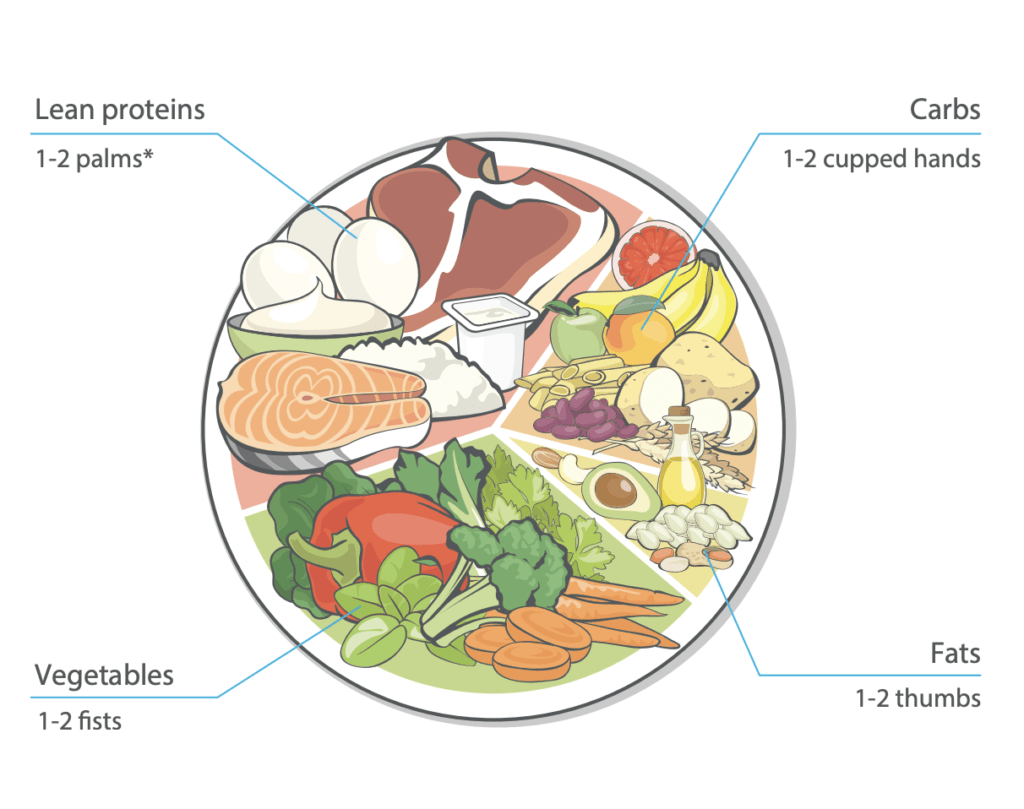
You have successfully created your meal. Remember learning how much and what you eat is part of your transformation process and this takes time. So, practice and master it well. See you on #Lesson 2: Movement, Exercise and Training.
Credits: Precision Nutrition
We priorities helping you to build a strong foundation and maintain longevity in your fitness, lifestyle and performance.
Send us a message here or email to find out how you can get started fitnesslifestyleperformance@gmail.com
